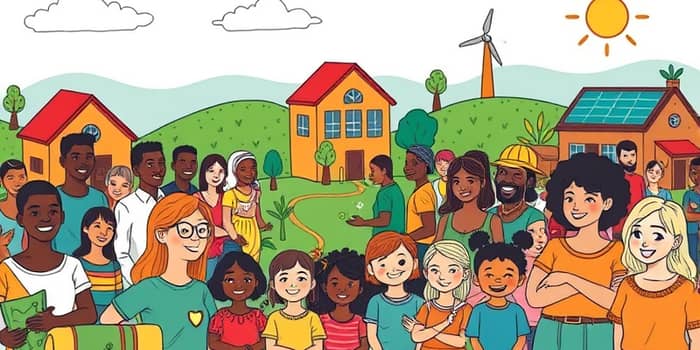
In a world where financial exclusion remains a barrier for millions, socially responsible lending emerges as a beacon of hope. By redefining the relationship between lenders and borrowers, this approach nurtures trust, fairness, and sustainable growth.
Communities around the globe are discovering how ethical finance can foster resilience and prosperity among those often left behind by mainstream banking.
Socially responsible lending prioritizes more than profit. It centers on well-being of borrowers and communities, promoting ethical lending practices, transparency, and environmental stewardship.
Beyond traditional creditworthiness, this model evaluates social impact, ensuring loans uplift underserved groups such as low-income families, minority entrepreneurs, and non-profit organizations.
Several lending models illustrate the depth and versatility of socially responsible finance:
Each approach shares a common goal: reducing inequality by removing barriers to credit and resources.
Technological advances and new data sources are reshaping responsible lending:
Fintech companies like Kashable leverage employment and pay data instead of traditional credit scores, offering payroll-linked loans with lower default rates. Open banking tools allow lenders to access real-time financial information, helping evaluate applicants excluded by historic scoring methods.
Community development credit unions (CDCUs), numbering over 350 nationwide, combine affordable loans with counseling services, guiding members toward long-term financial stability.
The ripple effects of ethical lending extend far beyond individual borrowers:
By channeling capital into grassroots initiatives, these loans strengthen social cohesion and foster sustainable development.
Data underscores the tangible advantages of socially responsible lending across the United States:
Consumers using CDFI loans save over £300 on average compared to high-cost alternatives, demonstrating both economic and social returns.
Trust forms the cornerstone of responsible lending. Institutions must offer clear terms and fair rates, ensuring borrowers understand obligations fully. Adherence to transparency and environmental sustainability goals prevents exploitation and safeguards vulnerable individuals.
Many lenders now integrate environmental criteria, directing funds toward clean energy, disaster resilience, and sustainable agriculture. This alignment amplifies positive outcomes by addressing climate and social challenges simultaneously.
Robust oversight and voluntary standards strengthen accountability in the sector:
The Responsible Finance Code of Practice mandates that community lenders demonstrate social purpose and transparency, maintain asset locks, and operate on a not-for-profit basis. State licensing requirements and partnerships with established banks ensure fintech innovators comply with consumer protection laws.
External certifications—such as alliances with “1% for the Planet”—provide third-party validation of social and environmental lending impact, reinforcing credibility and trust among stakeholders.
Despite its promise, socially responsible lending faces hurdles:
Addressing these challenges demands collaboration among regulators, lenders, and community advocates to preserve the sector’s integrity.
Kashable transformed access to personal loans by analyzing employment records rather than credit scores. Employees gained emergency funding at fair rates, leading to reduced financial stress and fewer defaults.
Salad Money employs alternative assessments to traditional credit scoring, ensuring borrowers receive affordable loans without falling into debt traps. Their holistic approach includes financial coaching to foster long-term resilience.
Socially responsible lending represents a paradigm shift in finance—one that values societal progress as much as financial returns. By prioritizing inclusion, fairness, and sustainability, lenders can drive transformative change in communities worldwide.
Harnessing innovation, robust regulation, and a steadfast commitment to ethics, this approach offers a powerful pathway to empowerment through inclusive finance, ensuring that no individual or community is left behind.
References





